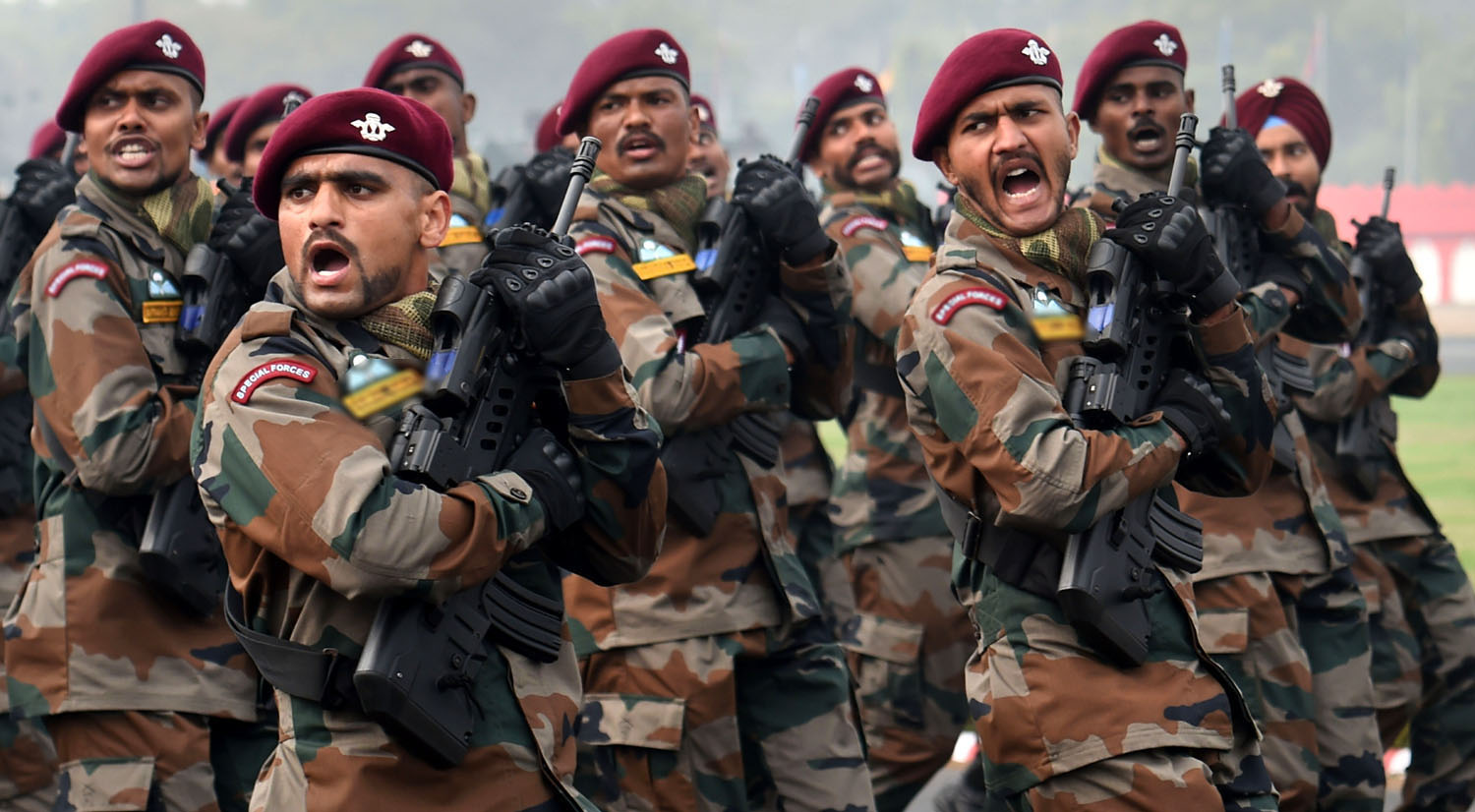The explanation given for the use of the products being bought by the Army reinforces India’s newfound strategic method of entering enemy territory and even establishing command and control elements.
NEW DELHI: The Indian Army is gearing up for a possible two-front aggression along India’s borders, with reports suggesting that Chinese troops along the northern borders are likely to make challenging movements in the coming months, something that will be matched by the non-state actors who operate from India’s traditional military rival, Pakistan.
To prepare itself for these developing scenarios, since mid-October, Indian Army has floated tenders to buy 200 medium-altitude drones, 163 high-altitude drones, 1,000 surveillance copters, 80 remotely piloted aircraft, and 750 remotely piloted aerial vehicles (RPAVs). All this equipment, being bought under fast-track emergency procurement, are to be delivered to the Indian Army by the end of November 2023, just months before the May 2024 general elections.
These purchases have been ordered even as Defence Minister Rajnath Singh recently stated that in accordance with a resolution passed unanimously in Parliament in 1994, India’s goal is to reclaim areas of Gilgit and Baltistan in Pakistan-occupied Kashmir (PoK) that are under the illegal occupation of Pakistan
The most recent of this tender, to buy 750 RPAVs, which was issued on 25 October, will be used by the Parachute (Special Forces) that executes special missions behind enemy lines. Interestingly, the tender floated by the Ministry of Defence specifically mentions that expeditious procurement of this surveillance equipment is needed because of the “current volatile situation along Northern borders”.
The explanation given for the use of these products reinforces India’s newfound strategic method of entering enemy territory and carrying out precision strikes, raids, elimination of high-value targets and even establishing command and control elements. This has been carried out, at least those which have been announced, in Pakistan and Myanmar. It has, to a large extent, had the desired deterrence effect on Pakistan-backed non-state terror groups.
The RPAV will be used to mount day and night surveillance along with the ability to scan the target area and provide a processed 3D scanned image of the target to execute special missions. The first 250 of these RPAVs will be delivered within six months of the signing of the contract, with the remaining 500 within the next six months. These RPAVs should not be more than 2 kg in weight, with the durability of flying capabilities of at least 30 minutes, having a regular and thermal camera, a flying range of 5 km with the ability to record 4k video with 16x digital zoom. The RPAV will be highly beneficial for the Special Forces to execute an operation to eliminate or capture a high-value target residing in a residential compound in hostile territory.
The Army has also sought to purchase 80 mini remotely piloted aircraft (RPA) systems with control and communication equipment under fast-track emergency procurement. While the RPAVs are for the use of special forces and quick campaigns, the RPAs will be used primarily by the artillery regiment of the Army. The RPAs with night visibility and target acquisition capability will be carrying out day and night, real-time reconnaissance, and surveillance to provide direction to artillery fire of an area of interest in the high-altitude area at the artillery unit level.
The Army is looking for a system that will provide high-resolution imagery to enable target detection, recognition, identification, and accurate location of adversaries’ location/build-up, location of mortars/guns, and movement of troops and vehicles during border management tasks and active operations. It will also facilitate accurate engagement and direction of artillery fire.
The range of the RPAs should not be less than 15 km and should have the capability to fly at 4.5 km height for at least 90 minutes and should be able to operate at a temperature of 45 degrees Celsius and -20 degrees Celsius.
Similarly, the Army is going to buy 1,000 surveillance copters that it has attributed to “the current dynamic volatile situation along the Northern Borders and Line of Control” that warrants “seamless surveillance”.
The tender states that “expeditious procurement of Surveillance Copter for meeting urgent operational requirements is an operation imperative, where undue/unforeseen delay is seen to be adversely impacting the capacity and preparedness of the Indian Army”. These copters will provide aerial surveillance capability and sustained point surveillance, which is a multi-sensor system, to carry out day and night, real-time reconnaissance, and surveillance of an area of interest. The system will provide high-resolution imagery to enable target detection, recognition, identification, and accurate location of adversaries’ build-up, mortars/guns, and movement of troops and vehicles during border management tasks and active operations.
The surveillance copters should not weigh more than 10 kg and should have the capacity to withstand high altitude strong wind currents/gusts up to 12-14 knots. It should be able to fly for a range of at least 5 km, at 4 km height for at least one hour. It should be capable of providing real-time video of minimum 1920 by 1080 pixels resolution and should have a 20X or higher continuous optical zoom and should be able to operate in the temperature range of 45 degree Celsius to -20 degree Celsius.
The Army will buy 360 plus drones for operating at high altitudes and medium levels for delivery of tools and equipment in different fields. These drones should be designed to carry a 100 kg payload with a range of 10 km and should be able to fly at a height of 4 km and should be able to perform in a temperature range of 30 degree Celsius to -20 degree Celsius.

